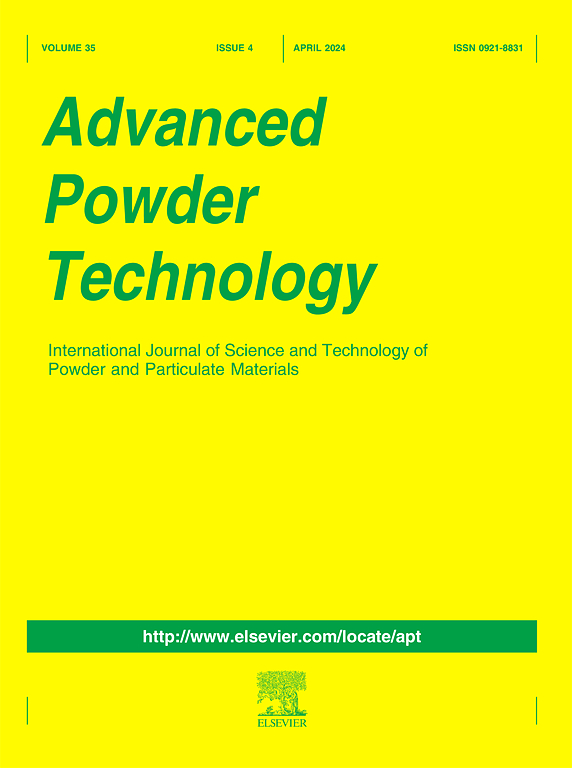一种高精度的混合深度学习方案用于高速图像中风成跳跃粒子的跟踪
IF 4.2
2区 工程技术
Q2 ENGINEERING, CHEMICAL
引用次数: 0
摘要
在中等颗粒浓度(每帧100个颗粒)下,用于揭示风成跳跃演化的传统跳跃粒子跟踪算法(SPTs)可能具有较低的集合召回率(~ 30%)。因此,我们提出了一种用于跟踪跳跃粒子的混合深度学习方法,称为YOLOv8-IKFH,它将用于粒子识别的YOLOv8与用于高速图像中粒子关联的改进卡尔曼滤波器和匈牙利算法(IKFH)集成在一起。在我们的验证实验中,与已发表的spt相比,YOLOv8-IKFH由于粒子识别和双参数约束等关联策略的最佳整合,可以实现最高的准确率(~ 93%)、召回率(~ 95%)、集合召回率(~ 50%)和最长的平均轨道长度(每轨道35个粒子位置)。总之,本工作为未来spt的发展提供了有价值的见解,并为深入了解强风下的跃变过程提供了潜在的工具。本文章由计算机程序翻译,如有差异,请以英文原文为准。

A hybrid deep learning scheme with high accuracy for tracking aeolian saltating particles in high-speed pictures
Traditional saltating particle tracking algorithms (SPTs) for revealing the evolution of aeolian saltation may have lower ensemble recall rates (∼30 %) under moderate particle concentrations (∼100 particles per frame). For this reason, we propose a hybrid deep learning approach for tracking saltating particles, termed YOLOv8-IKFH, which integrates YOLOv8 for particle recognition with an improved Kalman filter and Hungarian algorithm (IKFH) for particle association in high-speed pictures. In our validation experiment, it shows that YOLOv8-IKFH can achieve the highest accuracy (∼93 %), recall rate (∼95 %), ensemble recall rate (∼50 %), and the longest average track length (35 particle locations per track) compared with the published SPTs due to optimal integration of particle recognition and association strategies like two-parameter constraint. In summary, the present work provides valuable insights for the development of future SPTs and a potential tool for deeply understanding the saltation process under strong winds.
求助全文
通过发布文献求助,成功后即可免费获取论文全文。
去求助
来源期刊

Advanced Powder Technology
工程技术-工程:化工
CiteScore
9.50
自引率
7.70%
发文量
424
审稿时长
55 days
期刊介绍:
The aim of Advanced Powder Technology is to meet the demand for an international journal that integrates all aspects of science and technology research on powder and particulate materials. The journal fulfills this purpose by publishing original research papers, rapid communications, reviews, and translated articles by prominent researchers worldwide.
The editorial work of Advanced Powder Technology, which was founded as the International Journal of the Society of Powder Technology, Japan, is now shared by distinguished board members, who operate in a unique framework designed to respond to the increasing global demand for articles on not only powder and particles, but also on various materials produced from them.
Advanced Powder Technology covers various areas, but a discussion of powder and particles is required in articles. Topics include: Production of powder and particulate materials in gases and liquids(nanoparticles, fine ceramics, pharmaceuticals, novel functional materials, etc.); Aerosol and colloidal processing; Powder and particle characterization; Dynamics and phenomena; Calculation and simulation (CFD, DEM, Monte Carlo method, population balance, etc.); Measurement and control of powder processes; Particle modification; Comminution; Powder handling and operations (storage, transport, granulation, separation, fluidization, etc.)
 求助内容:
求助内容: 应助结果提醒方式:
应助结果提醒方式:


